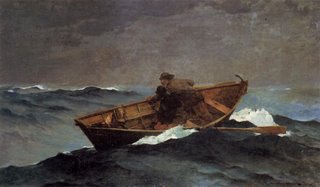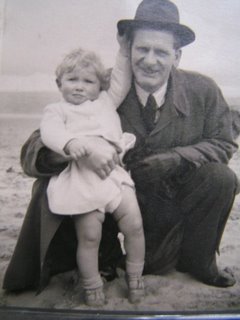A trip to the Dulwich Picture Gallery today to see a marvelous exhibition of the work of American artist Winslow Homer (1836-1910). Homer has a strong connection with Northumberland and in particular Cullercoats.

In the 1880s, Cullercoats, now part of Tyne & Wear, was a small Northumbrian fishing village, surrounded by industrial and coal mining communities, but it was also home to a flourishing community of artists.
Homer made two trips there during 1881 & 1882 and his wonderful paintings, water colours mostly, from that period capture scenes from the everyday lives of the local fishing community. He stayed in a hotel called the Hudlestone Arms which, along with the fishing community, is long gone. The old fishermen's cottages were demolished during 1960's and 70's but the local fisher folk of the 1880s live on in the work of one of America's most famous artists.
Many of Homer's Cullercoats paintings depict the village's fishwives who mended the nets and prepared and sold the fish caught by their men folk, as well as bringing up their families. According to local Historian Ron Wright a local lass called Maggie Jefferson appears in half a dozen of the Cullercoats paintings. Her family lived next door to Homer's studio; she later married a fisherman called William Storey and was a mother to an astonishing 17 children, she died in 1957 aged 88. Homer was to paint more than 20 watercolours of the people and views of Cullercoats, including one of a rescue of the crew of the ship, the
Iron Crown ( see picture below) which he witnessed during a heavy storm at the mouth of the River Tyne in October 1881.

(click to enlarge)
Homer was a self-taught artist whose career began as a Civil War illustrator with the American magazine Harper's Weekly. After his stay in Cullercoats he began to concentrate on marine subjects and he is considered by many to be one of the greatest painters of the sea.
 Fisherwoman
Fisherwoman,(probably 1882) the ruins of Tynemouth Priory and a lighthouse can be seen in the background. The lighthouse is no longer there. (click to enlarge)
In May 1998, Microsoft chairman Bill Gates paid a record £17.8 million for
Lost on the Grand Banks, ( see below) Homer's last major seascape.

(click to enlarge)










